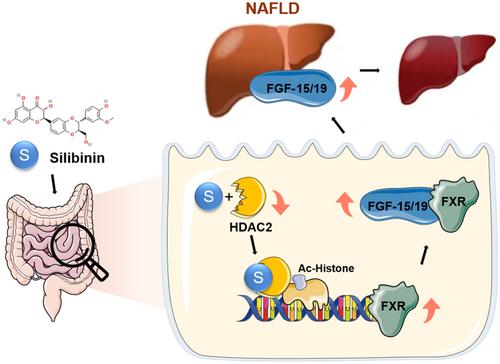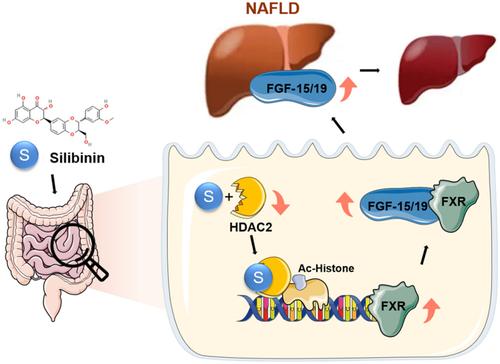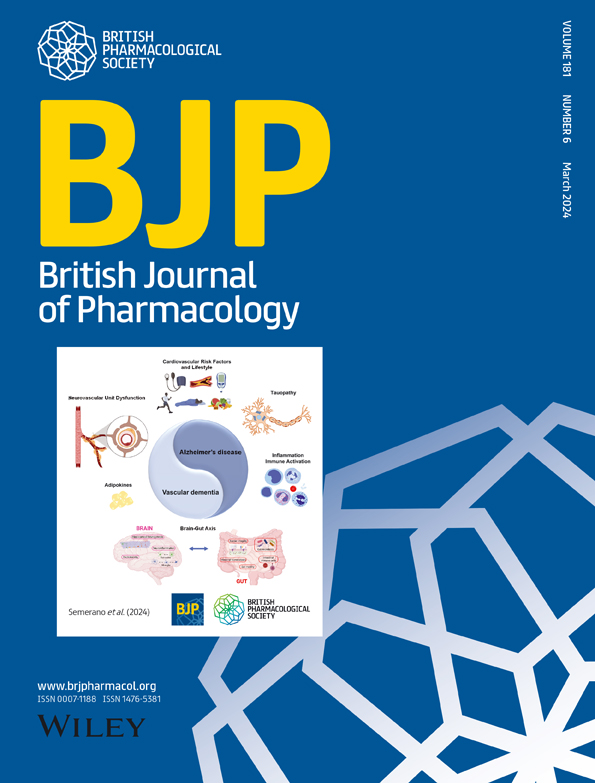Silibinin, a commonly used therapeutic agent for non-alcohol fatty liver disease, functions through upregulating intestinal expression of fibroblast growth factor 15/19
Abstract
Background and Purpose
Silibinin is used to treat non-alcohol fatty liver disease (NAFLD) despite having rapid liver metabolism. Therefore, we investigated the role of the intestine in silibinin mechanism of action.
Experimental Approach
NAFLD mice model was established by feeding them with a high-fat diet (HFD). Liver pathological were examined using H&E and oil red O staining. Tissue distribution of silibinin was detected by LC–MS/MS. SiRNA was employed for gene silencing and plasmid was used for gene overexpression. ChIP-qPCR assay was performed to detect the levels of histone acetylation. Recombinant adeno-associated virus 9-short hairpin-fibroblast growth factor (FGF)-15 and -farnesoid X receptor (FXR; NR1H4) were used to knockdown expression of FGF-15 and FXR.
Key Results
Oral silibinin significantly reversed NAFLD in mice, although liver concentration was insufficient for reduction of lipid accumulation in hepatocytes. Among endogenous factors capable of reversing NAFLD, the expression of Fgf-15 was selectively up-regulated by silibinin in ileum and colon of mice. When intestinal expression of Fgf-15 was knocked down, protection of silibinin against lipid accumulation and injury of livers nearly disappeared. Silibinin could reduce activity of histone deacetylase 2 (HDAC2), enhance histone acetylation in the promoter region of FXR and consequently increase intestinal expression of FGF-15/19.
Conclusion and Implications
Oral silibinin selectively promotes expression of FGF-15/19 in ileum by enhancing transcription of FXR via reduction of HDAC2 activity, and FGF-15/19 enters into circulation to exert anti-NAFLD action. As the site of action is the intestine this would explain the discrepancy between pharmacodynamics and pharmacokinetics of silibinin.


| 公司名称 | 产品信息 | 采购帮参考价格 |
|---|

 求助内容:
求助内容: 应助结果提醒方式:
应助结果提醒方式:


